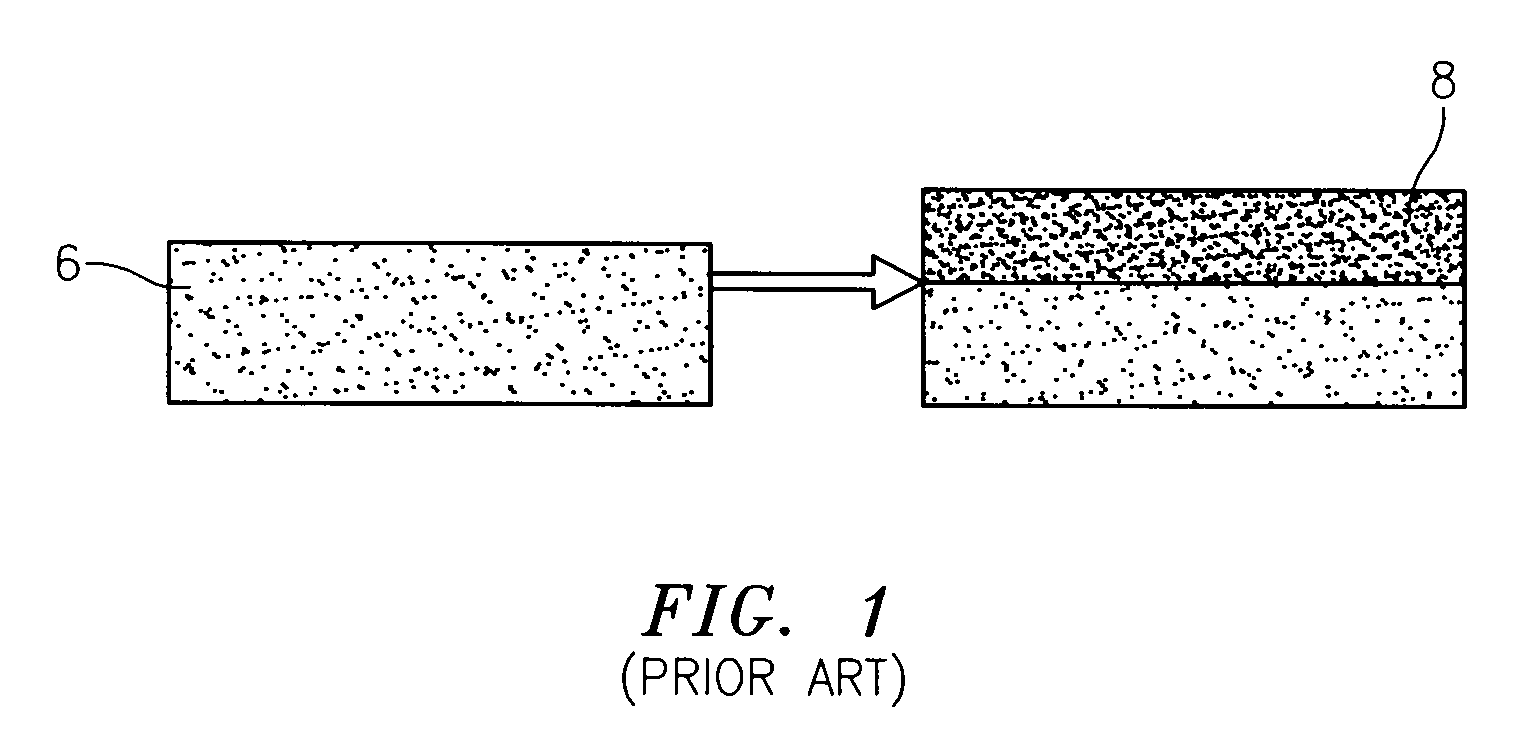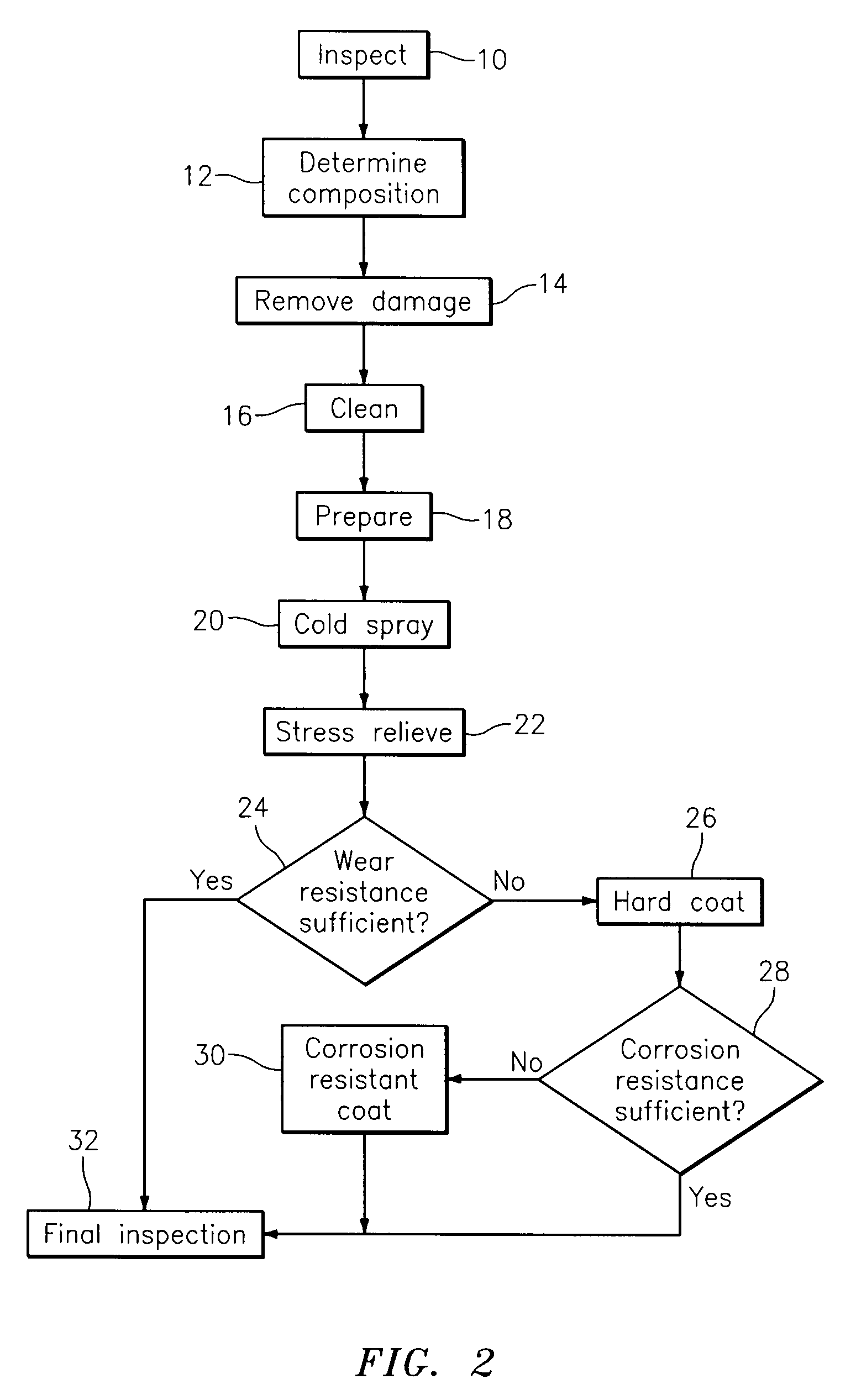Hard anodize of cold spray aluminum layer
a technology of hard anodizing and aluminum layer, which is applied in the direction of superimposed coating process, machines/engines, mechanical equipment, etc., can solve the problems of inferior wear resistance of hard anodizing coating, aa 2024 is soft,
- Summary
- Abstract
- Description
- Claims
- Application Information
AI Technical Summary
Benefits of technology
Problems solved by technology
Method used
Image
Examples
Embodiment Construction
[0017]Over the last several years, a technique known as cold gas dynamic spraying (“cold spray”) has been developed. This technique is advantageous in that it provides sufficient energy to accelerate particles to high enough velocities such that, upon impact during an initial pass, the particles plastically deform and bond to the surface of the component on which they are being deposited so as to build a relatively dense coating or structural deposit. On subsequent passes, the particles bond to the previously deposited layer. Cold spray does not metallurgically transform the particles from their solid state. The cold spray process has been found to be most useful in effecting repairs of components formed from ductile materials. For example, the cold spray process may be used during the repair of turbine engine components, such as a fan exit inner case or a gearbox, formed from aluminum or magnesium based materials. One such suitable cold spraying process is disclosed in U.S. Pat. Pu...
PUM
| Property | Measurement | Unit |
|---|---|---|
| particle size | aaaaa | aaaaa |
| speed | aaaaa | aaaaa |
| particle sizes | aaaaa | aaaaa |
Abstract
Description
Claims
Application Information
 Login to View More
Login to View More - R&D
- Intellectual Property
- Life Sciences
- Materials
- Tech Scout
- Unparalleled Data Quality
- Higher Quality Content
- 60% Fewer Hallucinations
Browse by: Latest US Patents, China's latest patents, Technical Efficacy Thesaurus, Application Domain, Technology Topic, Popular Technical Reports.
© 2025 PatSnap. All rights reserved.Legal|Privacy policy|Modern Slavery Act Transparency Statement|Sitemap|About US| Contact US: help@patsnap.com



